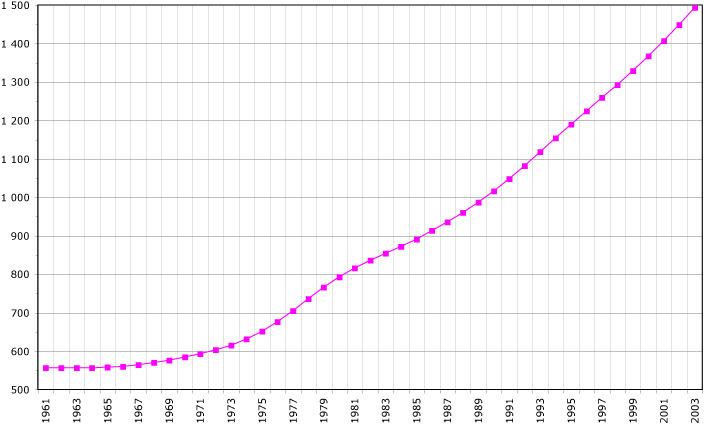 | ||
This article is about the demographic features of the population of Guinea-Bissau, including population density, ethnicity, education level, health of the populace, economic status, religious affiliations and other aspects of the population.
Contents
- Map of Guinea Bissau
- Ethnic groups
- Population
- Vital statistics
- CIA World Factbook demographic statistics
- Population growth rate
- Sex ratio
- Life expectancy at birth
- Nationality
- Religions
- Languages
- Literacy
- References
Map of Guinea-Bissau
Ethnic groups
The population of Guinea-Bissau is ethnically diverse with distinct languages, customs, and social structures. Most Guineans, 99%, are Blacks — mostly Fula and Mandinka-speakers concentrated in the north and northeast, the Balanta and Papel, living in the southern coastal regions, and the Manjaco and Mancanha, occupying the central and northern coastal areas.
Most of the rest are mestiços of mixed Portuguese and black descent, including Cape Verdean minority. Due to the exodus of most Portuguese settlers after independence, less than 1% of Guinea-Bissauans are pure Portuguese. The country also has a Chinese minority, including Macanese people of mixed Portuguese and Chinese blood from Macau.
Most people are farmers. 50% are Muslims - this makes Guinea-Bissau the only Portuguese-speaking nation with a Muslim majority and most Muslims are Sunnis. 40% are pagans, principally the Balanta. Less than 10% are Christians, mostly Roman Catholics.
Population
According to the 2010 revision of the UN World Population Prospects, Guinea-Bissau's population was 1,515,000 in 2010, compared to 518,000 in 1950. The proportion of the population below the age of 15 in 2010 was 41.3%, 55.4% were aged between 15 and 65 years of age, while 3.3% were aged 65 years or older.
Vital statistics
Registration of vital events is in Guinea-Bissau not complete. The Population Departement of the United Nations prepared the following estimates.
CIA World Factbook demographic statistics
The following demographic statistics are from the CIA World Factbook, unless otherwise indicated.
